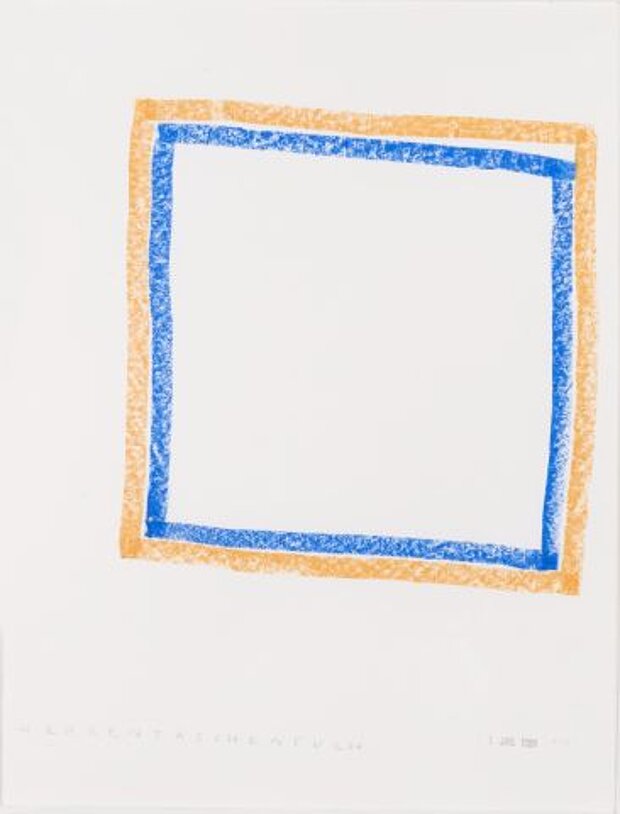
Brandmeier, Monika
Herrentaschentuch
Gentleman's Handkerchief
1989

© mumok
| Object description | Wax crayon, pencil on paper |
|---|---|
| Object category | graphics |
| Material |
Object:
oil pastel,
graphite pencil
Support:
paper
|
| Technique |
Object:
drawings by technique
|
| Dimensions |
Object:
height: 42 cm,
width: 30 cm
Frame:
height: 54,5 cm,
width: 46 cm,
depth: 1,7 cm
|
| Year of acquisition | 2007 |
| Inventory number | MG 267/0 |
| Creditline | Sammlung Dieter und Gertraud Bogner im mumok |
| Rights reference | Bildrecht, Wien |
| Further information about the person | Brandmeier, Monika [GND] |
| Literature | Leidenschaftlich Exakt.Sammlung Dieter und Gertraud Bogner im mumok |
Gently irregular and slightly off center, yellow and blue lines create two uneven squares. The lines are executed in wax crayon on paper, leaving rough color stripes on the paper, with ragged edges and an uneven application of color. These are not squares following exact mathematical formulae, constructed according to the rules of geometry with equal sides and precise right angles. Instead, these two overlapping shapes seem to float weightlessly over a white background, as light as soap bubbles. The title of the work, GENTLEMAN’S HANDKERCHIEF, is written with a similar lightness in capital letters on the bottom of the page. This may look like a quickly drawn sketch, but it is in fact a very calculated experiment with space and surface, and with precise form and direct gestures. The German artist Monika Brandmeier conceptualizes geometry and opens it up for individual perception. This includes both her sensual placing of oily wax crayon on drawing paper and the references to the tradition of the use of the square in art. Kasimir Malevich’s famous black square of 1910 was also a paradigmatic “end” of the image. Since then the square has been used again and again in art, as a symbol for the artistic utopias of modernism, and time and again when these utopias are under attack the square is used to stand for their failure. It also stands for a history of art determined by men. This is present in our everyday worlds just as it is in a colorful handkerchief, as this work’s title states. Perhaps this is not much more than a tradition men have maintained and cared for, into which anyone may once “sneeze.” The square, or rather the idea of the square, can take on a myriad of associations and meanings.
© mumok – museum moderner kunst stiftung ludwig wien